As garden designers we need to prove ourselves on every new project. Homeowners and professionals alike invest a lot when constructing new walls, terraces and lighting systems. And there's a lot required to maintain these things, particularly if they're poorly constructed or if poor materials are chosen. When it comes to plants, I've learned that not all are created equal.
In his book
The Exuberant Garden and the Controlling Hand, landscape designer William H. Frederick, Jr., refers to select plants as aristocrats, for their refined character that sustains itself without much intervention. Others may call them thugs for their aggressive, carefree nature.
Whatever you call them, these plants allow for gardens to thrive on a grand scale without a lot of maintenance. See which of the ones below could work for your landscape.
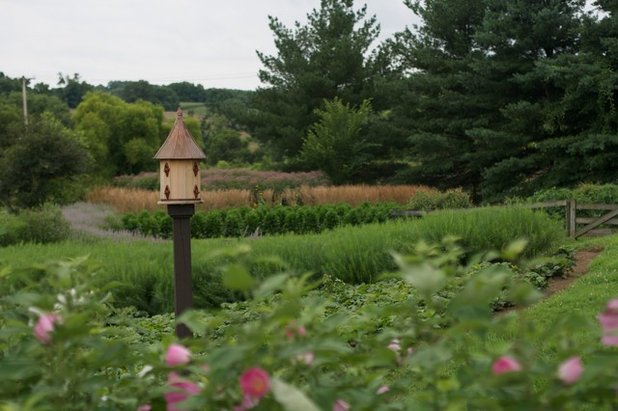
A garden of this scale, in this location, could never be built with finicky plants commonly found in garden centers. This garden borders a stream that feeds the Brandywine River in Philadelphia, and it's littered with undesirable weed seeds constantly trying to find a home. Aggressive, carefree plants make this project sustainable and manageable.
Caution: As with any self-seeders, check with a local native plant society before planting to be sure your choices are non-invasive in your area.
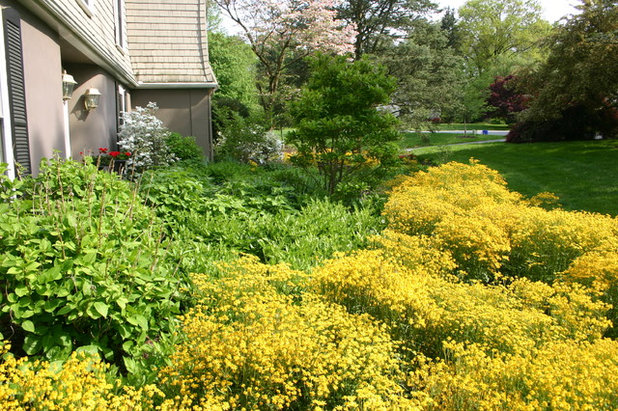 Golden ragwort
Golden ragwort (
Packera aurea or
Senecio aureus, USDA zones 3 to 8) is a very aggressive seeder. You can cover a huge area in a few years by starting with just a handful of plants. In my own garden, I have been experimenting with underplanting warm- and cool-season grasses with perennials like this to suppress early cool-season weeds with great success.
Name note: Today this plant is called
Packera aurea, but I have loved it as
Senecio aureas, and so the name stands for me.
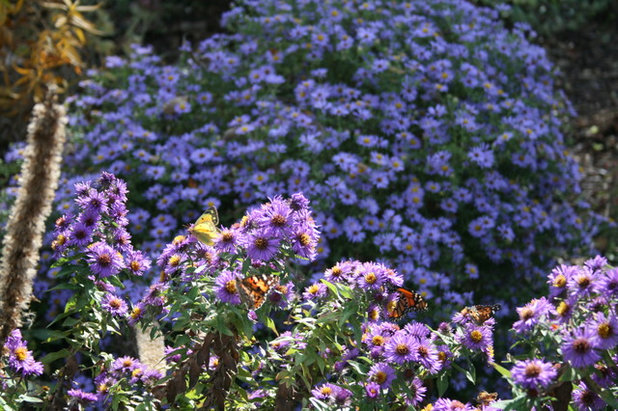
Benjamin Vogt / Monarch Gardens
Raydon's favorite (
Aster oblongifolius 'October Skies', zones 3 to 8) was described by a friend as bulletproof. This plant spreads and seeds out into the garden easily in a variety of soils and explodes in the fall with vivid purple, just as most other plants are beginning to take on their mellow fall colors.
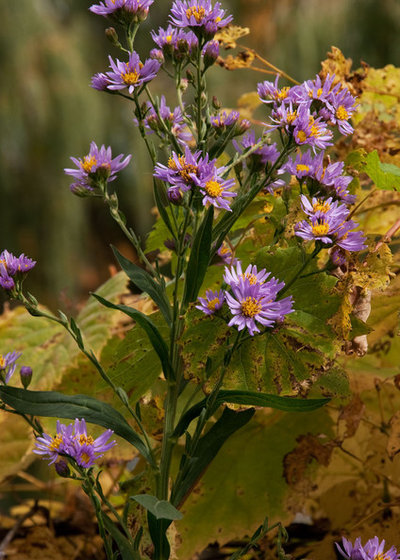
Barbara Pintozzi
Yes, another aster for you to consider. I can't say enough about these plants.
Tartarian aster (
Aster tartaricus 'Jindai', zones 4 to 8) has become more available recently. Discovered by Rick Darke and Skip March in the Jin Dai Botanic Garden in Japan, it can grow taller than 5 feet. It also spreads via rhizomes, making it a worthy foe to most weeds.
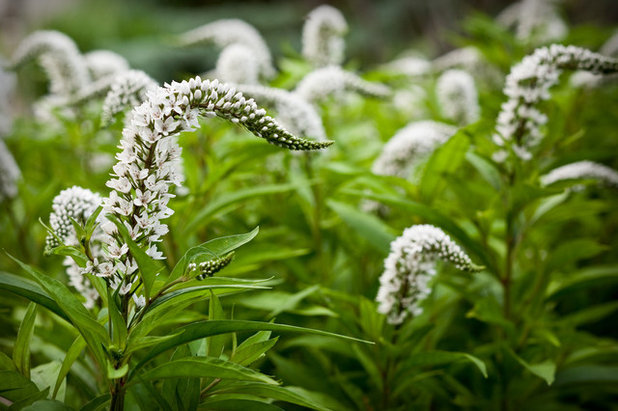
Ginkgo Leaf Studio
Gooseneck loosestrife (
Lysmachia cletheroides, zones 3 to 8) is misunderstood — or, dare I say, hated — by many gardeners who want to maintain eclectic gardens. This plant is a tremendous ground cover and will need to be planted among other strong plants to help keep it in check. If you want to transform a large area into a garden, this is an amazing plant to use.
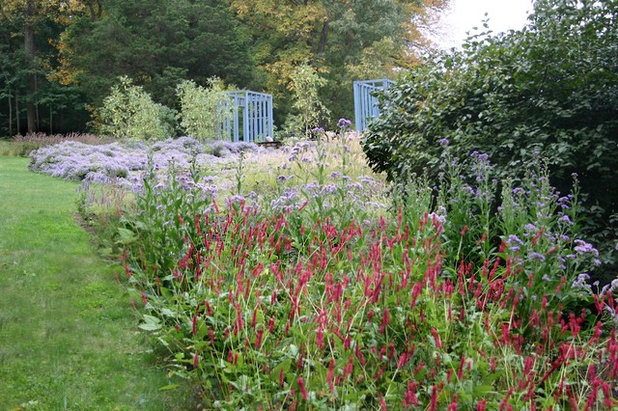
Donald Pell - Gardens
Fleece flower (
Persicaria amplexicaulis 'Firetail', zones 4 to 7) does not seed out, but it does manage to stand strong in the landscape. This plant can get fairly broad in moist soils, but I have also used it above shallow bedrock with success. It grows in full sun and more shade than you might think. Its hot pink flowers look red in the shade and will bloom from July on, until the frost knocks the plant down.
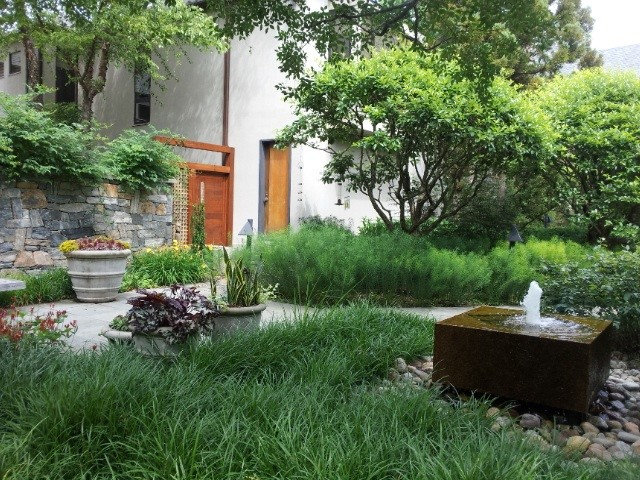
Design Farm Group
Lily turf (
Liriope muscari 'Big Blue', zones 5 to 10) has filled the racks of many retail outlets. But the species I find truly effective is
Liriope spicata (zones 4 to 10). This plant slowly spreads across the ground plane and creates masses so thick, I have found myself laying in its comfort with my little ones. Go ahead and try it; the plant won't mind in the least! Summer flowers are a bonus with this exceptional plant.
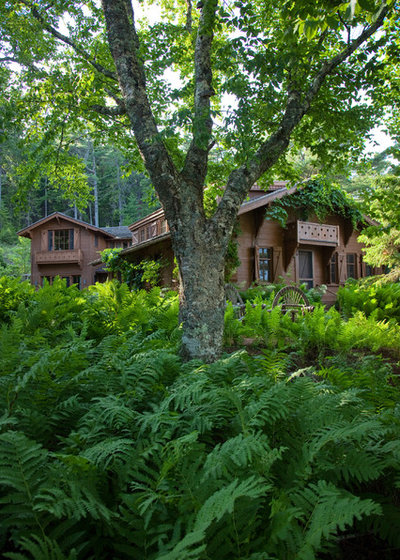
Matthew Cunningham Landscape Design LLC
I have yet to understand gardens in sunny places without grasses, and I feel the same about woodlands and ferns. Ferns are old, simple and graceful plants that can be extremely effective when sited well.
Ostrich fern (
Matteuccia struthiopteris, zones 3 to 7) can be one of the most aggressive spreaders. It will live forever in dry soil but tends to look ratty if it dries out, so site it in a moist, rich soil where it can take over. For dry woodlands try
hay-scented fern (
Dennstaedtia punctilobula, zones 3 to 8).
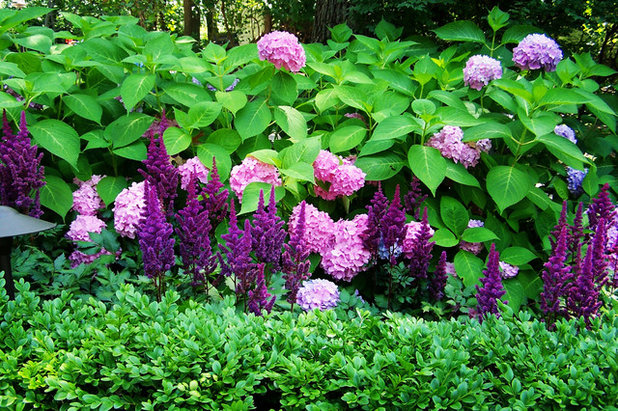
The Carter Rohrer Co.
Chinese astilbe (
Astilbe chinesis, zones 4 to 8) is a great addition to the garden. As a summer bloomer, it grows thick, glossy foliage in average garden soil, just as long as the soil doesn't get too dry.
'Purple Candles' is one of my favorites, but try 'Visions' or 'Pumila' for a very low ground cover.
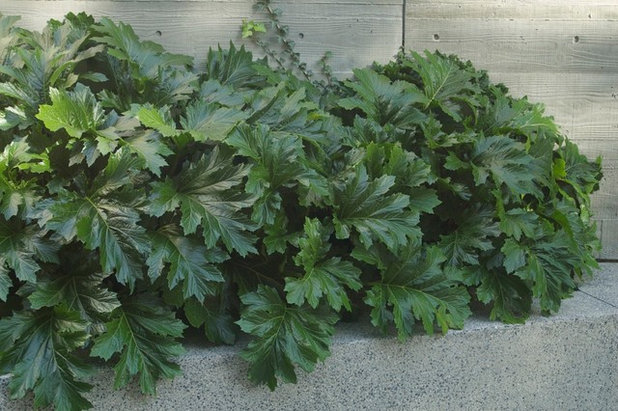
CYAN Horticulture
Bear's breeches (
Acanthus mollis, zones 7 to 10) grows in huge clumps on rhizomes, which makes for very easy division. It has grand purple flowers and dark, leathery foliage. These plants create bold ground covers when set in drifts and can keep the most tenacious weeds at bay.
Acanthus hungaricus (zones 5 to 10) is a close cousin and just as impressive.
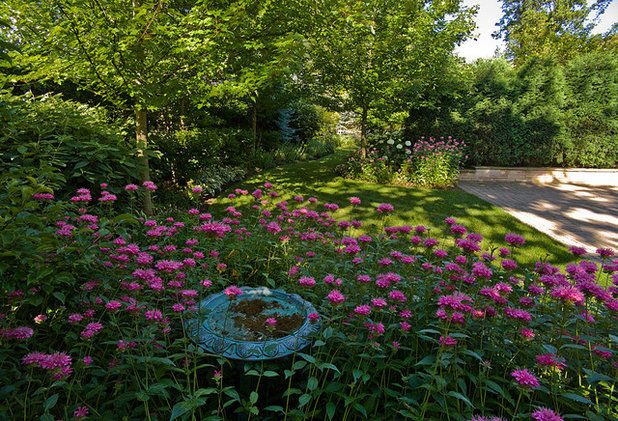
Van Zelst Inc
Bee balm (
Monarda didyma, zones 4 to 9) has become a favorite functional perennial of mine. I have used this plant to battle latent weed seed spikes of Canada thistle (
Cirsium arvense, zones 3 to 7) with little maintenance.
Although this plant is susceptible to powdery mildew, it never really looks bad to me en masse. If it's a bother to you, cut it to the ground and watch it push out new, clean foliage the same year.
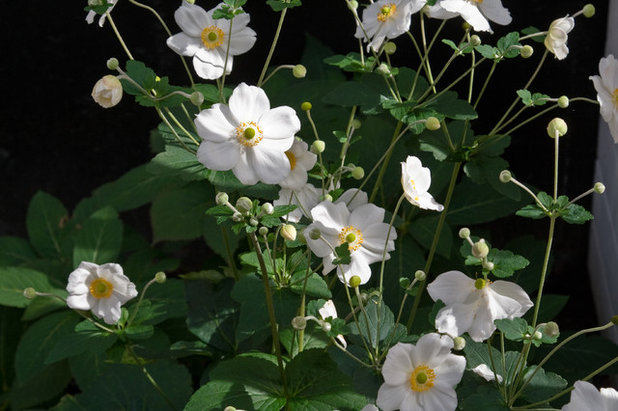
Matthew Cunningham Landscape Design LLC
Windflower (
Anemone x hybrida spp) cultivars spread aggressively. These plants are very effective in shade and sun, as long as they don't get too dry. Windflowers bloom in the late summer and have what may be one of my favorite blooms. They are downright mesmerizing.
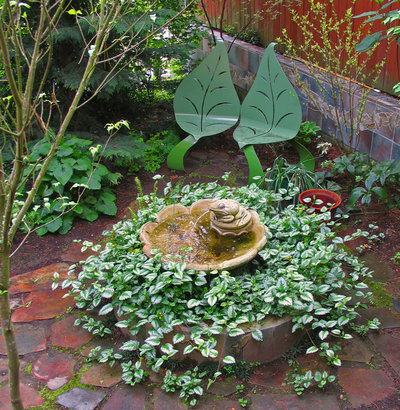
Exteriorscapes llc
Dead nettle (
Lamium purpureum, zones 3 to 8) can spread in dry shade, in rocky outcroppings, under pines, in dense woods and even in some shade. It can be effective at managing erosion, as it spreads from rooting stems. I've seen this low spreader find its way through wood lots and even hold its own against stilt grass (
Microstegium vimineum).
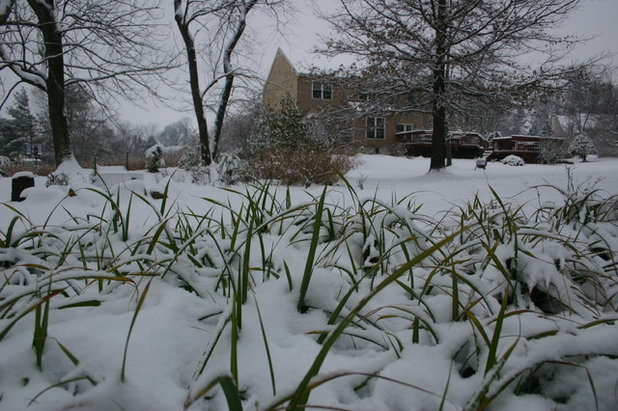
Donald Pell - Gardens
Hard to find but worth the search,
drooping sedge (
Carex pendula, zones 5 to 9) is a monster among the sedges. This plant tends to be semievergreen, depending on exposure, and can consume turf grass — such as in this photo, where it was planted in my lawn as an experiment. Within two years most of the grass had died away, buried under the shade of the large leaves with minimal weeding.
With so many great plants out there to consider, I encourage you to look for and embrace aggression in your garden. Plants like
barrenwort (
Epimedium ‘Frohnleiten’),
comfrey (
Symphytum),
houttuynia (
Houttuynia cordata),
plume poppy (
Macleaya cordata),
blue wild indigo (
Baptisia australis) and Joe Pye Weed (
Eupatorium ‘Gateway’) all have places in the garden.
The most important lesson I hope I can impart is that gardening doesn’t have to be expensive. If you are mulching or weeding, stop and question your methodology and planting selections. The right plant in its right place is the right solution!
More: Why mass plantings work better in the landscape





